Che at the Revolution Square: like a magnet spreading light
especiales
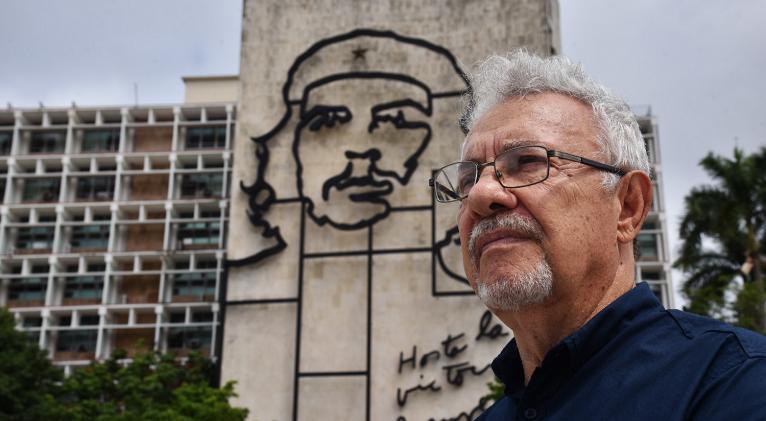
“Dreams are still that force that encourages people,
Like a magnet that unites them all every day…” (**)
The scene: one of the first days in the month of October, this year, global economic crisis, conflicts, post-pandemic era, tightened U.S. blockade, and the Revolution Square in Havana, some tourists try to avoid the heat at noon to take pictures close to the image of Che.
—Where are you from?
—Chile, we came from Chile, answered two young girls and a smiling old man.
—Why are you taking pictures of Che?
—Because he is a legend. He is history himself
And I quickly think of the Chevalier Bayard, from the old song to Che Guevara, by Mirta Aguirre, and I had goosebumps before the sculpted relief of the Guerrilla man, majestic, that unites a lot of people that converge in one place just to have a memory with him.
When I say to the Chileans that Enrique Ávila, the author of the sculpture, is here by my side, they rushed to congratulated him, hugged him, and thanked him for that iconic art work. And that scene will surely repeat again and again every time a tourist guide spots the painter, sculptor, designer and professor walking by the Square.
Enrique, the artist, the man
Enrique Ávila González (Holguín 1952) welcomes the team of the Cuban News Agency at his house in the Kholy neighborhood, in Havana. It happened after an earlier telephone call to set up an appointment to talk about the Che image at the Revolution Square, 30 years after it was installed in the same spot where millions of Cubans gather to celebrate, or cry, always united.
It took Ávila almost a year to shape the steel plates, the ones he found. It was the Special Period in full force and his project was selected among many others, to perpetuate the image of Commander Guevara in the Ministry of the Interior building, where he had his office.
Enrique speaks slowly, gestures little and is an excellent communicator. As in a film, he reviews those days of hard work and celebrates and recognizes Román Acosta, a steelworker who became an artist as he knew how to read the design as a true engineer or architect.
Sit on a comfortable sofa and surrounded by his paintings, he goes back in time:
“I had already made several sculptures throughout the country. Before that of Che, I had worked with the Saíz brothers located in front of the Pinar del Río university, and worked also the Martínez Tamayo brothers at the school of the Ministry of the Interior. I had previously worked Che in a cube at the entrance to the city of Holguín, with Korda’s photo. I had already taken a chance with Che because Korda's photo always impressed me. It is really an iconic image.
“They invited me to the contest, I came to Havana, I saw the wall and I was amazed. I was a little scared, though. Forty meters high by twenty meters wide, it is actually pretty big. I started working in Holguín and asked myself: what do I do? That was the toughest part, the first step. I did a lot, a lot of sketching trying to figure out the elements I should use.
“I eventually took my chances and, since steel is the material I best know, and steel matches perfectly with Che’s character…—I mean, I can't imagine a Che made of aluminum, right? or sand—, and I decided on steel.
“I got the idea of making a drawing, because in the plastic arts it is the simplest solution as well as in architecture, and I said well if I make a drawing of Che I have the wall in the background, it is like paper on the wall.
“But it would be a three-dimensional drawing and that has something to do with it. Coincidentally, drawing is the most austere thing there is in the plastic arts. For me, Che was one of the most austere people from what we already know... Now there was a problem, behind the building there is an elevator exactly in the same spot where the sculpture should be placed and it will not support the weight, and that is where I placed the pillars, those are the ones supporting the 16-tons face, and not the wall.”
Enrique explains that his project was selected from almost twenty others, and refers to the detail that the star on the Guerrillero's cap is two meters high, and that is the length that separates it from the wall. He says that since 1967, there was always a Che in the building; but never lasted that long, that is why they decided to call on the artists to place a work that would last over time.
“Although someone said that this would be provisional, when they announced that my project was the winner, I had detractors; but this October 8th, it turns three decades old.”
The impact, history, Cuba
Enrique's paintings roam the world in private and public collections. Cristina Fernández took one and placed it in the Casa Rosada, in Buenos Aires. She adopted the idea and had an Evita Perón’s sculptural relief as well.
“President Obama wanted to take a photo with Che, that went viral across the United States; Americans still come to my house, in groups, and want to take the photo where the former president took it. They also know Camilo is there. I will tell them the story. It is Cuba.
“In an entertainment TV program in the United States, which millions of people watch, they showed the image so that they could identify where in the world it was located and they immediately responded that in Havana. That is encouraging, many people come from all over the world to have a picture there…
“An important art critic from the University of Oxford, in a book of universal icons, included that Che at the Revolution Square. It gives you the idea that you did something very important, and if it is linked to Korda's photo...
“I went to his house one day and asked permission to use his photo. I took him to the Revolution Square, we became friends and then when the sculpture was complete, a Portuguese journalist took a photo of us that was spread all over Europe. There are several anecdotes. I have many.”
A light to say
There would not be enough pages, nor the space to describe and write everything that the artist tells, very slowly, without the slightest presumption, aware that this immense work, together with that of Camilo, and Juan Almeida —who seems to be walking by the streets of Santiago de Cuba—, belongs to all those who admire and appreciate them.
As a good design and set designer teacher, Enrique handles volume and three-dimensional things very well, and light plays a very important role.
“When we see ancient paintings, the Saints have a light over them, like it is something good. And in these cases, the light represents their example, which is also good, so they can illuminate the path for us.
“It has to do with the halo of the Saints. It is the example to follow, because these men are human, but they stop being common when they leave behind a legacy such as that of Che and Camilo.
"Technically, having the background illuminated contrasts with the black line of the figure and is more impressive, we can see it better, it is not just to illuminate, it is to express, it is mythical."
Stopped in front of the sculptural relief of Che Guevara, Enrique knows that it now needs repair to prevent the rust from causing damage, that sometimes the lights are missing and have to be renewed because the birds peck the cables of the LED lights that hang behind the steel bars, which goes unnoticed by thousands of people who come to see the icon. But they are just minor details given the dimension of the work.
There is the Heroic Guerrilla Man, defying the times, guiding the path, with the usual star, like a magnet that spreads light.
(**) Fragment of the song Son los sueños todavía (Dreams are still the ones…), by Gerardo Alfonso
Translated by Sergio A. Paneque Díaz / CubaSí Translation Staff



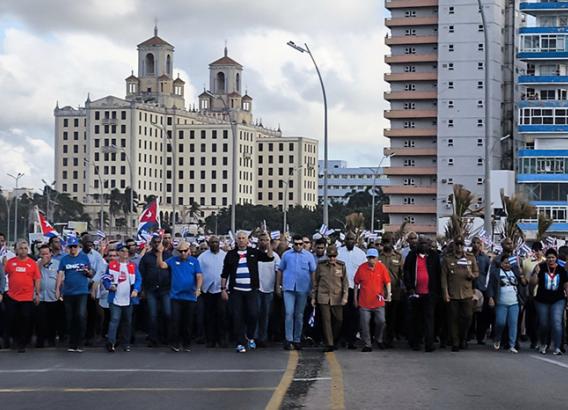
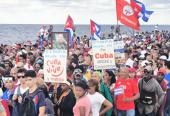

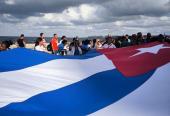




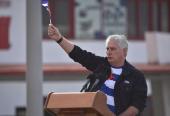
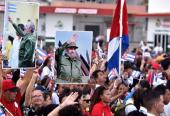

Add new comment